presented by the NEXUS MULTICULTURAL ART CENTRE GALLERY
17 October – 1 November 2013
They’ve had me at Textiles and Africa. The first one I come across quite regularly in South Australia but the second one is a rare find.
The exhibition is the brainchild of Melanie Harteveld Becker, the Namibian Cultural Liaison, and curator Victor J Krawczyk. Together they conceptualised the idea of exposing the art community in Adelaide to the world of African art while simultaneously exposing Namibian artists to the wider, international art world. With the help and support of Nexus and the National Arts Council of Namibia, their idea became a reality.
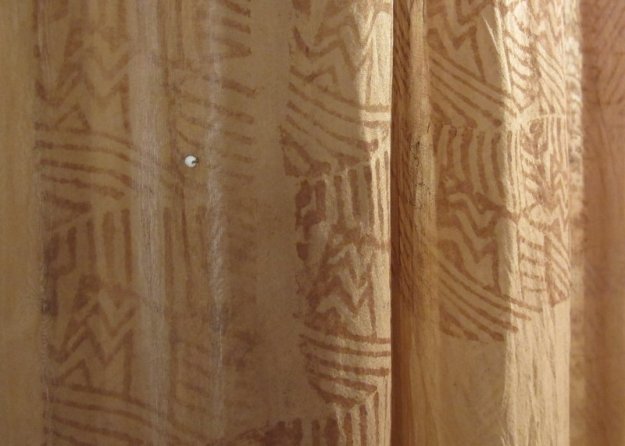
Maria Caley, Ukerete, Silk chiffon dyed with bird plum bark
They brought together an exciting collection of contemporary art and craft, consisting of textiles, baskets, jewellery, linocuts, graphic illustrations, prints and … bottle tops. Eight different artists and art collectives, represent an ethnic and culturally diverse Namibian society.
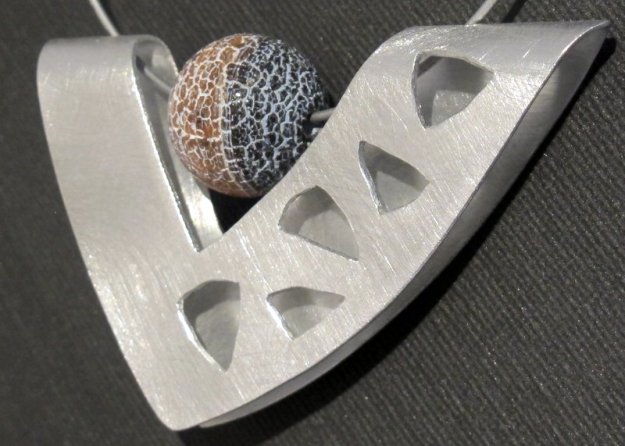
Attila Giersch, jewellery from Tameka Collection
I spoke to Maria Caley, a textile artist and fashion designer who accompanied the exhibition to Australia. By using plant and earth dyes occurring naturally in Kavango, Northern Namibia, and decorating with traditional Kavango patterns, she uses her textile art to explore her cultural heritage. She believes it is important to document her ethnic inheritance in a contemporary manner and so make it accessible to a future, modern generation.
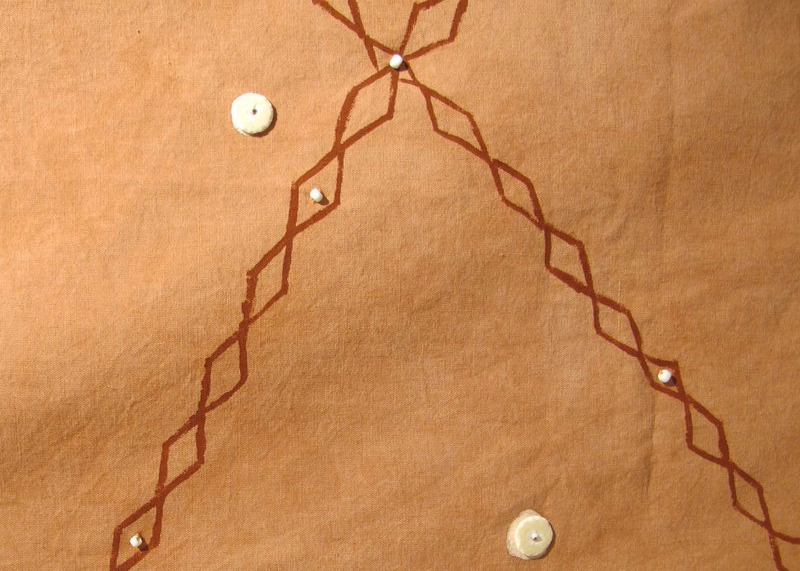
Maria Caley, Untitled, cotton dyed with red ochre with hand painted patterns and embellished with San people ostrich egg beads
Other textile artists represented are Chakirra Classen who’s experimenting with iron oxide dye on raw silk and cotton, and Filllipus Sheehama who uses recycled bottle tops to create alternative textiles.
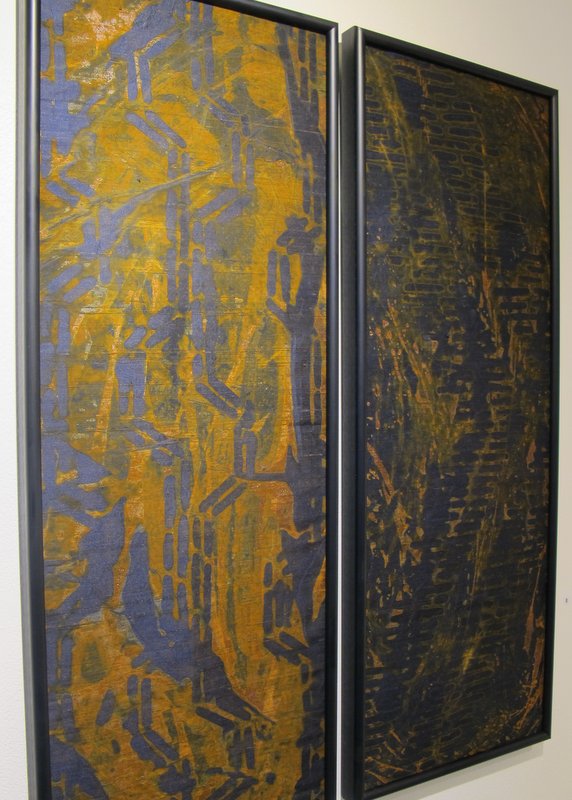
Chakirra Classen, Untitled, Raw silk dyed with iron oxides
There are few other art forms which capture the unique features of a landscape as successfully as basket weaving. Local plant material dictates the shape, texture and colour of a basket, naturally occurring dyes and the patterns and motives unique to a local ethnic group, all add up to capture the essence of a place in one object.
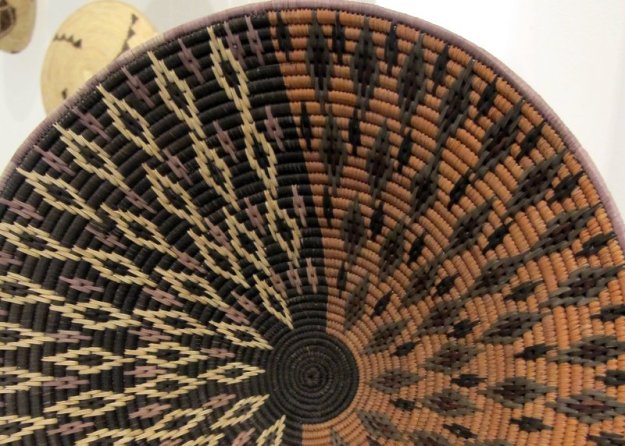
Imelda Ngonde, OMBA Collective, Kavango food serving basket
Looking at the baskets in the exhibition, masterfully displayed in a suspended collection, it is obvious that they represent three different Namibian landscapes and ethnic groups (Ovambo, Khwe and Kavango.) The fact that objects so representative of the earth are displayed in a suspended, almost floating way, casting wonderfully moving shadows on the walls, spoke to me about how this exhibition opens up new horizons to the mostly isolated artists of Namibia.
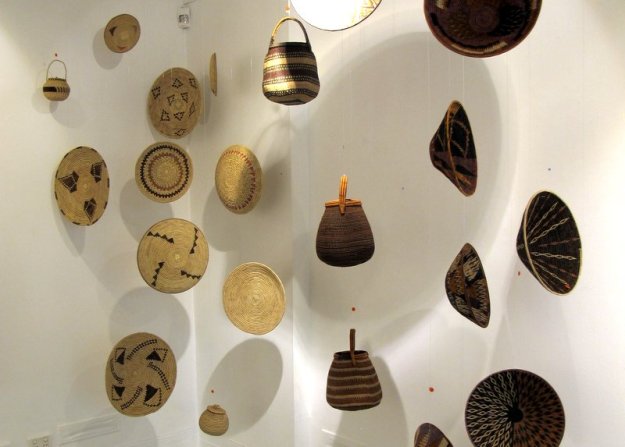
Installation of Ovambo, Khwe and Kavango baskets
This exhibition is a groundbreaking event, paving the way for future collaborations between the artists of Namibia and Australia. I salute Melanie, Victor and Nexus for the important work they do. Namibia is still on until Friday 1 November. Do yourself a favour and don’t miss this. The artworks are on sale and well worth the investment.
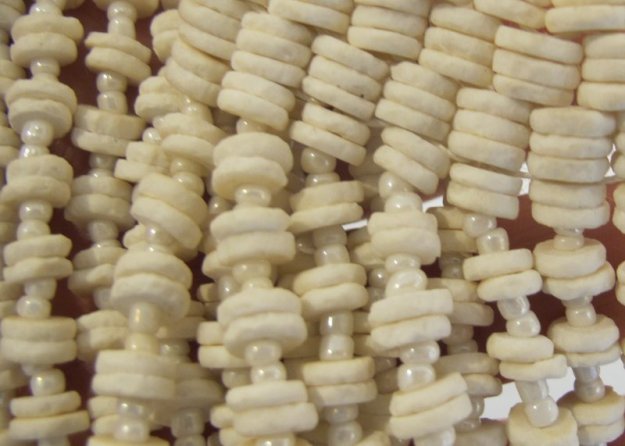
San people jewellery, Hui-a khoe Foundation, ostrich egg shells











